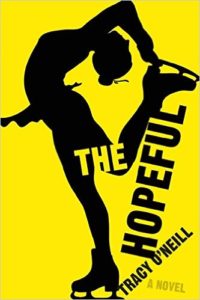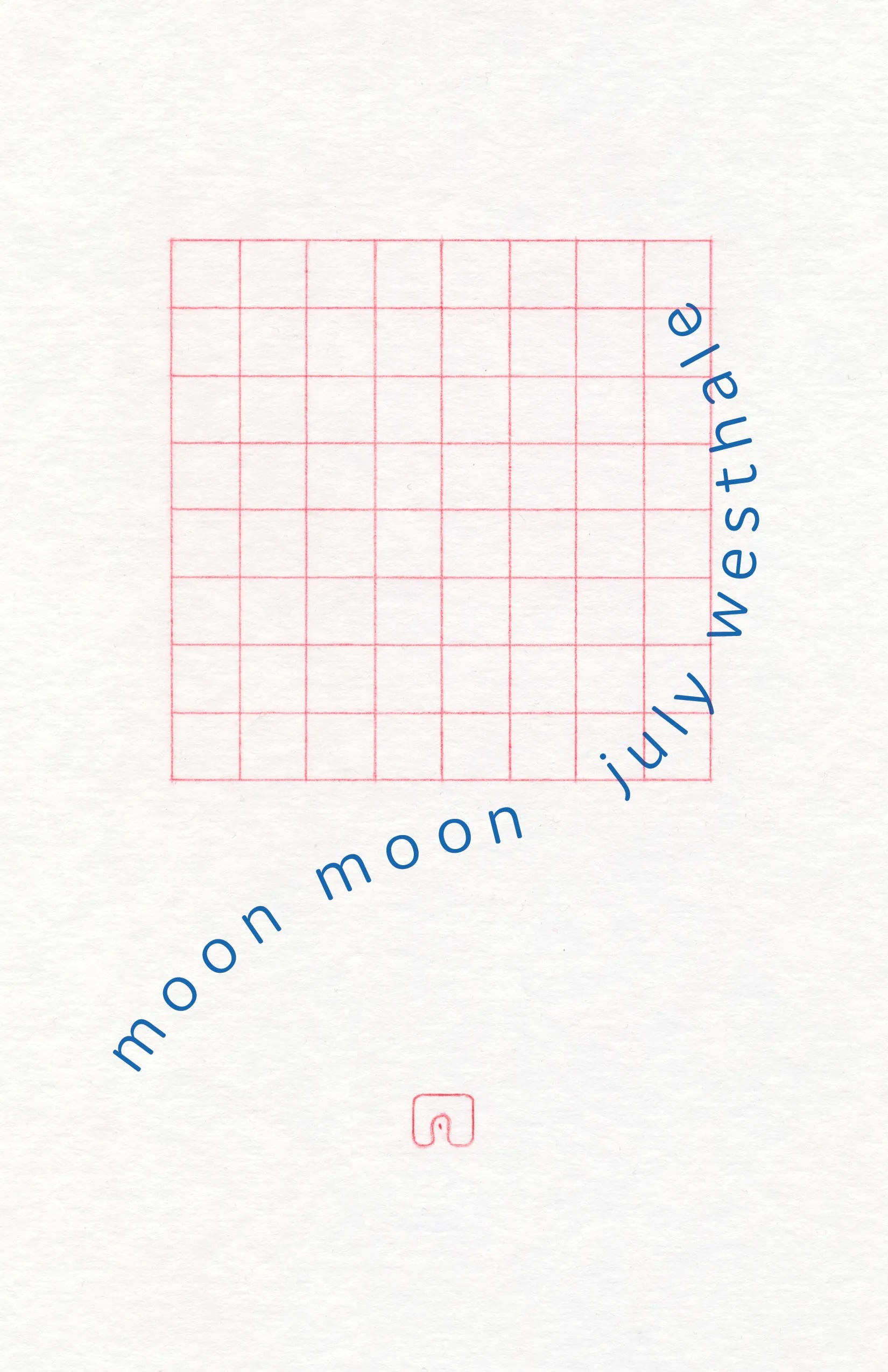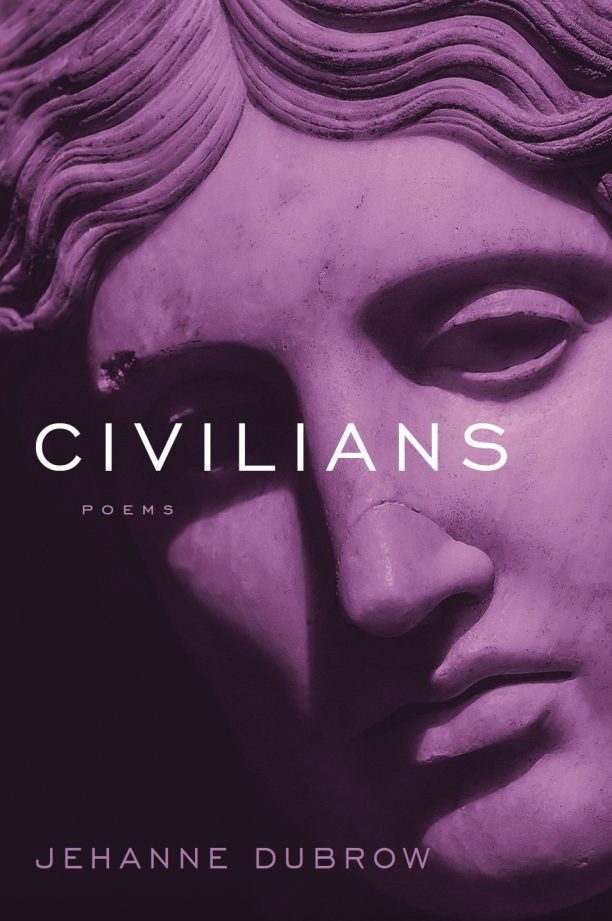NICOLE TRESKA interviews TRACY O’NEILL

It’s a drizzly summer night, and I’m meeting Tracy O’Neill in Manhattan’s East Village to talk about her debut novel, The Hopeful, the story of a figure skater who breaks her back on the cusp of Olympic competition. O’Neill skated as a child, and in her pearl raincoat, cinched at the waist and hooded, it’s not hard to imagine a younger Tracy, her hooded warm-up hiding a sequined costume, awaiting her moment on the ice.
O’Neill published her first short story with The Literarian in 2011, and since then her fiction has appeared in Guernica, Granta, and Vol. 1 Brooklyn, her non-fiction in Rolling Stone, The Millions, and The Atlantic. The day of the interview, she was editing a piece for The New Yorker website, which ran June 25, 2015. The Hopeful was long-listed for the Center for Fiction’s First Novel prize, and O’Neill has been named one of The National Book Foundation’s 5 under 35 Honorees. Girl is everywhere.
The Hopeful’s protagonist is a 16-year-old Olympic figure-skating “hopeful,” uniquely named Alivopro, a truncation of a Latin phrase, Alis volat propiis: She who flies with her own wings. Ali is the adopted Native-American daughter of white parents, Lou and Alvin Doyle. The Doyles are people who believe willpower can or must trump biology, and within the family Ali’s role is to confirm the infallibility of will.
One day Ali falls during practice, and in a second breaks her back, her family, and their expectations for the future. After the accident, Ali deliberately acquires a speed habit to get back what seems to be slipping away—hope, time, and her sense of self.
From the first time Ali pushes off the rink’s edge, she exhibits aptitude and eventually drops of out school to train full-time. With Alvin behind the wheel, she commutes from New Hampshire to Boston where Ali becomes a rink rat, a “SCOB snob,” a Skating Club of Boston skater whose family is committed to the lifestyle, the sequins, the driving long distances.
But when Ali breaks two vertebrae trying to land the Triple Salchow—a jump that requires the skater to cross their arms like they’re in a casket and spin one thousand and eighty degrees—three-and-a-half rotations—each member of the family drifts off to new pursuits, applying the same fervor that they previously bestowed on Ali’s Olympic career. In Ali’s case, the replacement obsession is a speed habit, which she acquires in her zeal to get back in shape and which quickly becomes her primary passion.
Ali returns to high school, where a student’s recent drunk-driving death has led to designated mourning times and parental panic. Lou (worried that her daughter’s biology might make her more susceptible to alcoholism) preemptively sends Ali to AA where she meets people who drink the way she skates. People like John Doe—an older alcoholic writer with a prescription for uppers and a passing interest in getting in Ali’s pants. She convinces him to sell her pills.
Once Ali is off the ice, her teenage body begins to develop, and she sees the speed as a way to get back down to size, to “race back to herself.” She can lose weight and gain time. Ali may be young, but she understands that every second gone is gone for good, and she chronicles time’s passing with the same obsessiveness she applies to skating and doing speed. She begins to rely more and more on the amphetamines, and the reader senses that with every pill, Ali is accelerating toward disaster.
The backdrop to Ali’s quest is the career of Michelle Kwan, the uncrowned queen of American skating. Within The Hopeful, Kwan is at once idol, myth, and cautionary tale. Arguably America’s best figure skater, she brought technical precision, art, and affection to her triple-toe-loops and salchows. Kwan kept competing for the gold until 2006, when she withdrew from the Winter Olympics citing injury, never to return to competitive skating.
Ali considers Kwan her role model yet believes that, unlike Kwan, she will return to figure skating; the disconnect reflects Ali’s youth, but also the disparity between the lives we hope for and the lives we live, and much of the book is set in the gulf between those lives.
At some point, each character in The Hopeful is told to forget the hoped-for thing: the Olympic dream, the perfect family, the academic pursuit. They are told these dreams are not for them—find happiness elsewhere!—but they persist, and even when those attempts are futile or farfetched, their refusal to give up bestows upon them a Quixotic dignity that cannot but inspire a little hope.
NT: Ali vividly recalls her first memory on the ice, and it’s central to her love of the sport. Do you have a similar formative memory of skating?
TO: The first time you skate is like perceiving air for the first time. You realize that it’s not just this negative space surrounding you; you’re in communion with zephyr. The body no longer is incidental. It’s elemental. You feel like a noble gas.
NT: Can you talk a little about the importance of Michelle Kwan to The Hopeful?
TO: The thing about Michelle Kwan is that she failed to win the Olympics, and she continued to try, defeat after defeat. That straddling of the line between brilliance and delusion makes her incredibly alluring to me, and she sort of serves as this model for Ali in The Hopeful. Ali believes if she just tries hard enough, she will eventually win, and Kwan encapsulates the dedication [Ali] believes is necessary to attain her objective. The irony, of course, is that Kwan never did win the Olympics, so Ali is pursuing two competing paradigms.
NT: How long were you yourself a skater, and what prompted you to stop?
TO: After six or seven years dedicated to the ice, the skating world still baffles and thrills me, but I stopped when I was teenager. At the time, my brother had a pretty serious health problem, and I didn’t drive yet, so during his long convalescence there was no way I could get to the rink. In retrospect, it was the best thing that could have happened for my mind. I’d already had some pretty serious injuries and probably would have futilely continued to try to surmount them at the expense of developing any interest in academics. For a long time, I couldn’t have cared less about school, but once I stopped skating, I remembered how much I loved to read, to argue, and otherwise gather words.
NT: Speaking of words, there are several that recur throughout the book and carry a lot of thematic importance; can you talk a little bit about them?
Simulacrum (an image or representation or semblance of something)
TO: On some level, the novel treats hope as a simulacrum for whatever is hoped, which is a little different. So, essentially the characters are living these fantasies… There is a sense of these simulacrum lives that we don’t live, but feel that we could.
Synecdoche (a figure of speech by which a part is put for the whole, or vice versa)
TO: I would say that motherhood acts as sort of a synecdoche in this particular work. Motherhood is a state that is only possible within this very finite period of time, and for a lot of women—and in particular for the mother character, Lou Doyle—she feels [the possibility of motherhood] running out in the same way that we can feel our lives running out.
And there is a way in which Ali wants to be her own mother … She almost wants to give birth to this fantasy life herself, and she can also feel her time running out.
Inertia (lack of movement or activity, especially when movement or activity is wanted or needed)
TO: I think that what’s really interesting about inertia is this idea that essential change is not going to occur without disturbance from another force, and in the novel, hope is the disturbance that can dismantle the static nature of various characters. So, at one point, the father is very depressed. He doesn’t do anything, he sits around the house moping, and then these hopes about his daughter animate him. At the same time, some of the characters have this hope inertia, I’ll say. For example, Lou. She has spent so much of her life wanting a family and romantic love, that she can’t stop [looking for] it even though she does have it already. And the same thing with Ali. She keeps trying to go back to the world that she loves even though that world has really ended for her.
NT: Were you consciously writing a pointedly American novel?
TO: It is definitely interrogating the very American ethos that hard work will glean success, and I’m not entirely sure that I can come down on either side of a binary.
I will say that in this particular book, you have all of these thwarted people: the father wanted very much to be a great geneticist, and he wasn’t smart enough to do that. And the mother thinks that she just wants to have a family, and then she gets the family and it’s sort of that Daisy Buchanan effect—it’s not as good as she thought it was going to be.
NT: Why was it important that Alivopro be adopted?
TO: In The Hopeful, Ali must confront the fact that she hasn’t won the lottery of exceptional bodies. She wants to believe that you can choose your future, despite the fate defined by the body, and her mother’s ability to create a family outside the limitations of infertility is one way that she’s seen her ethos actualized.
At the same time, it’s also about this multicultural family, and what it means to be able to choose. The family is chosen, created out of adoption and not out of biology, and one of the questions the book asks is: Is that the same as having a family the traditional way? Is it not? Is the approximation good enough? Is it better?
NT: This is a novel that focuses largely on the lives of women, women whose own bodies and selves are the cause of their destruction or disappointment by developing, or not developing. Was this something you always wanted to talk about?
TO: I think that it was important to me when I was writing the book that Ali was someone who didn’t want to become a woman, and it’s not just that she doesn’t want the physical body of the woman, although that’s sort of the plot motor, but it’s about not wanting the type of lives that are traditionally assigned to women. Ali wants to be totally free. She wants to be totally independent and self-made. She doesn’t want to depend on anyone; she doesn’t want to take care of anybody. So there’s that.
On the other hand, it’s also about something very human. I think all bodies destroy the self, on some level, or the destruction of the body is aligned with the destruction of the self. And the aging adult body is, uh… aging. Aging is rude. (Laughs.) And it’s something that all people obviously do go through, but I think it’s a much bigger problem for women, and it’s one that women confront much earlier, because women have that death of the ability to create life.
NT: Self is fragmented throughout the novel. Ali knows she’s made up of more than one identity, and yet after her injury, she can’t shake the singular identity of “skater.” Is this her central struggle?
TO: Yes, I would say that she isn’t sure if the self or identity is simply constituted by desire. There are all of these other pieces (of herself) that feel very separate to her, and so she clings to one identity so she can have a sense of cohesion within herself, even though she doesn’t entirely believe it.
NT: At one point Ali refers to “the terrible reality required to make progress.” What is the terrible reality? The price you pay for greatness?
TO: Well, I think you need to be a little bit delusional to succeed in art or sport or anything where you’re expected to fail and very few people are geniuses. Essentially, it makes no sense to ever believe that you’re going to write a novel; it makes no sense to ever believe that you’re going to show a photograph at MoMA, to believe you’re going to be an Olympic champion. But the only way people ever do those things is by gambling on this really insane idea. But when she talks about the terrible reality, it’s also that she’s willing to sacrifice everything around her.
NT: If you’re willing to sacrifice everything, and you still fail or fall short—whether for lack of smarts or strength, or health—how do you keep living, knowing you’re not going to be enough?
TO: For these characters, there are a few different ways that they do it, and they’re not always happy ways of persisting. Lou, for example, just continues to try to woo and be wooed. Alvin has lived vicariously, and that’s the way he’s dealt with his failure. And when that first vicarious-living situation fails, he tries a new one. Ali goes back to the exact same thing, as delusional as it is, but I think that’s really beautiful—that even though it’s completely unrealistic, she keeps trying. And I think that would be a great way to live. Like if I had been somebody who, didn’t for example, write this book, and I just kept trying to write a book for the rest of my life…
NT: There are worse ways to live.
TO: Yeah! You know, a lot of people thought that it was a really dark book, and I actually didn’t understand that because I felt like the book was ultimately about the ways that we do persist, whether or not we can realistically achieve anything important.
Tracy O’Neill published her first short story with The Literarian in 2011, and since then her fiction has appeared in Guernica, Granta, and Vol. 1 Brooklyn, her non-fiction in Rolling Stone, The Millions, and The Atlantic.
Nicole Treska has been published in The Coffin Factory and Moonshot Magazine, and was a recipient of the Jerome Foundation 2012 grant for Travel and Study in Fiction.



